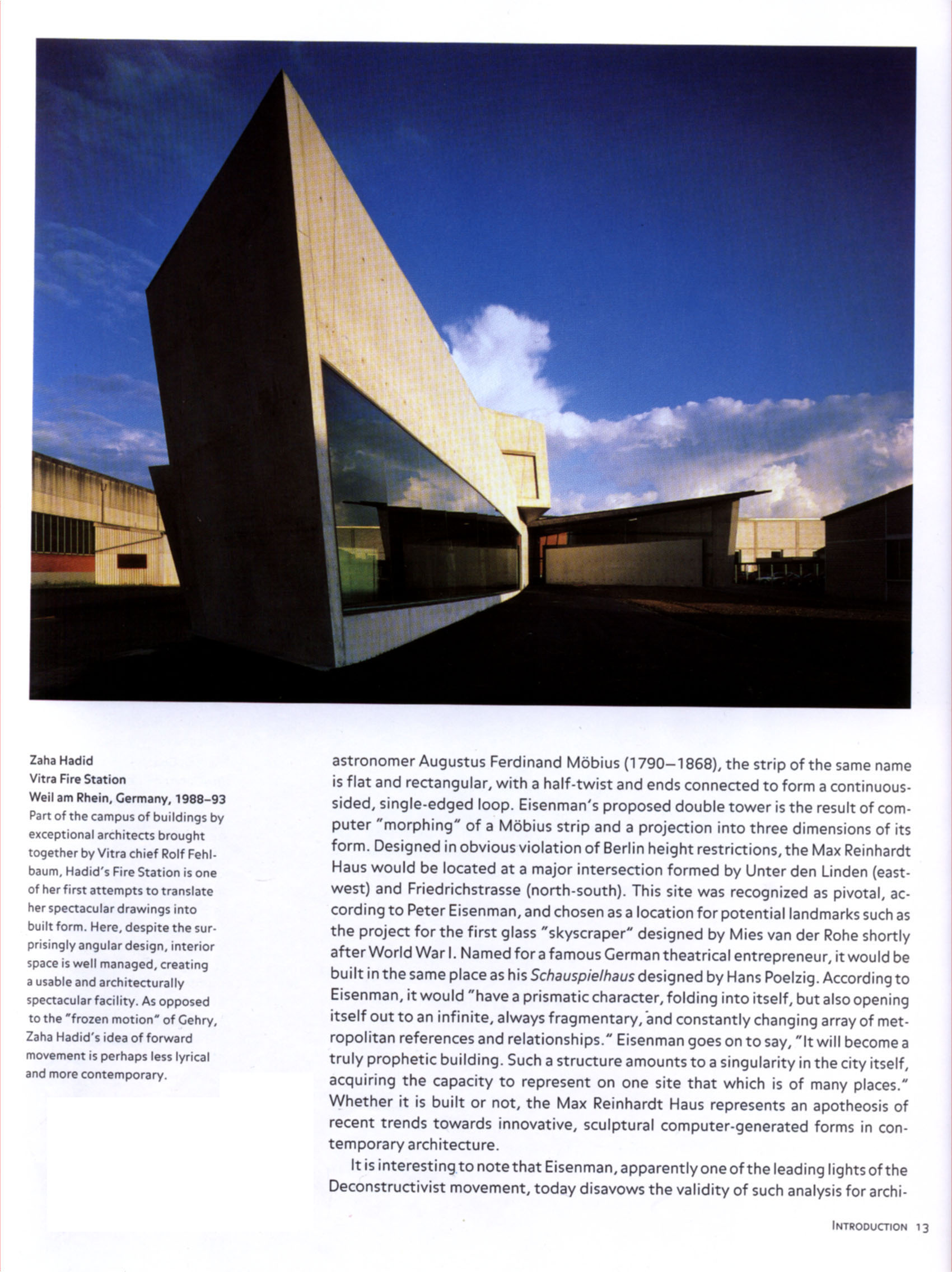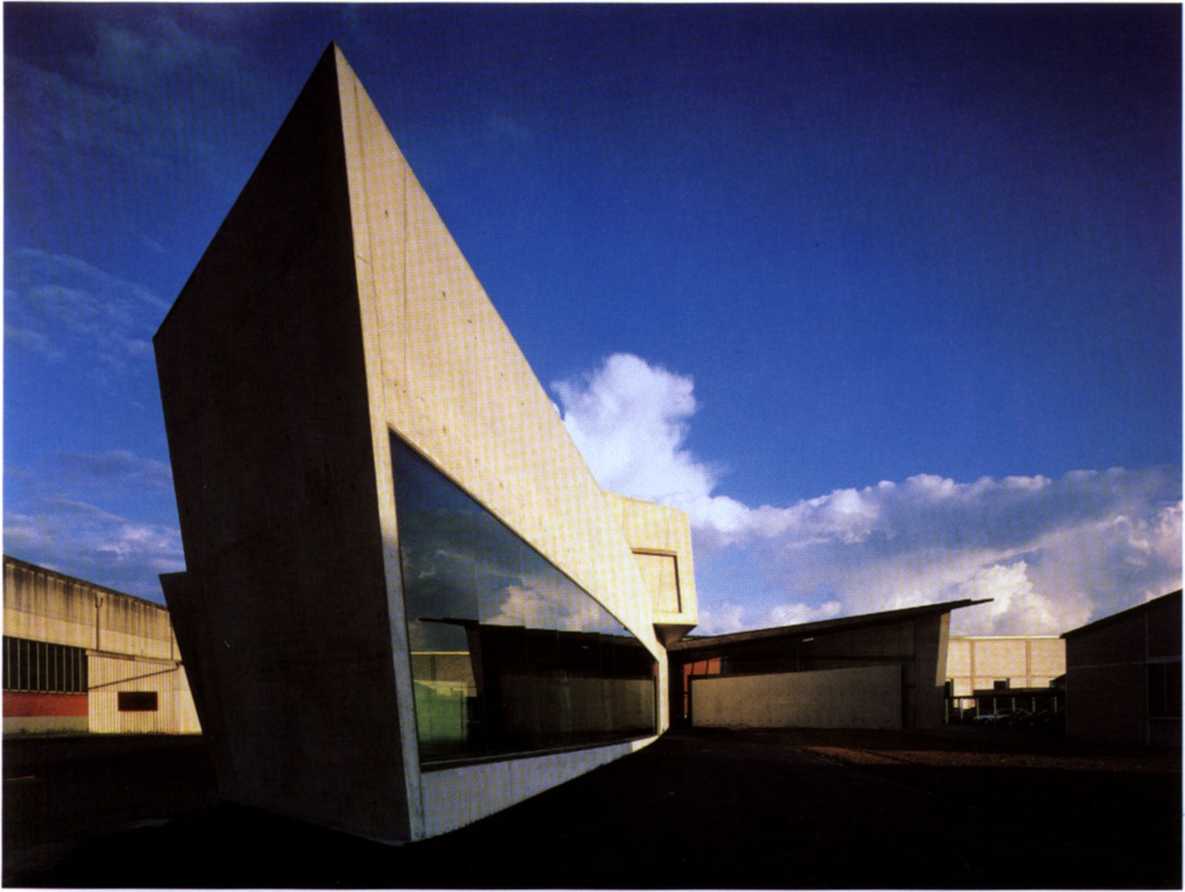86027 New Forms Taschen 011


Zaha Hadid Vitra Fire Station
Weil am Rhein, Germany, 1988-93
Part of the campus of buildings by exceptional architects brought together by Vitra chief Rolf Fehl-baum, Hadid's Fire Station is one of her first attempts to translate her spectacular drawings into built form. Here, despite the sur-prisingly angular design, interior space is well managed, creating a usable and architecturally spectacular facility. As opposed to the "frozen motion" of Gehry, Zaha Hadid's idea of forward movement is perhaps less lyrical and morę contemporary.
astronomer Augustus Ferdinand Móbius (1790-1868), the strip of the same name is fiat and rectangular, with a half-twist and ends connected to form a continuous-sided, single-edged loop. Eisenman's proposed double tower is the result of Computer "morphing" of a Móbius strip and a projection into three dimensions of its form. Designed in obvious violation of Berlin height restrictions, the Max Reinhardt Haus would be located at a major intersection formed by Unter den Linden (east-west) and Friedrichstrasse (north-south). This site was recognized as pivotal, ac-cording to Peter Eisenman, and chosen as a location for potential landmarks such as the project for the first glass "skyscraper" designed by Mieś van der Rohe shortly after World War I. Named for a famous German theatrical entrepreneur, it would be built in the same place as his Schauspielhaus designed by Hans Poelzig. According to Eisenman, it would "have a prismatic character, folding into itself, but also opening itself out to an infinite, always fragmentary, and constantly changing array of met-ropolitan references and relationships." Eisenman goes on to say, "It will become a truły prophetic building. Such a structure amounts to a singularity in the city itself, acquiring the capacity to represent on one site that which is of many places." Whether it is built or not, the Max Reinhardt Haus represents an apotheosis of recent trends towards innovative, sculptural computer-generated forms in contemporary architecture.
It isinteresting to notę that Eisenman, apparently one of the leading lights ofthe Deconstructivist movement, today disavows the validity of such analysis for archi-
Introduction 13
Wyszukiwarka
Podobne podstrony:
New Forms Taschen 119 ern artists to touch fundamenta! elements that are still very much part of eve
New Forms Taschen 140 Page 151 Massimiliano Fuksas Entrance to Grotto Niaux, Franco. 1988-93&nb
New Forms Taschen 207 Pagei218/219 Alvaro Sira Factory for Vitra Weil am Rhein, Germany, 1992-9
New Forms Taschen 049 Pages54/SS Renzo Piano Kansai International Airport Osaka. Japan, 1988-95 Buil
71279 New Forms Taschen 143 Jean-Piorre Raynaud Humań Space Museum Ludwig. Cologne, Germany. 1995
New Forms Taschen 150 Page 161 Oan Craham "Two-Way Mirror Cylinder Inside Cube" Oia Center
więcej podobnych podstron